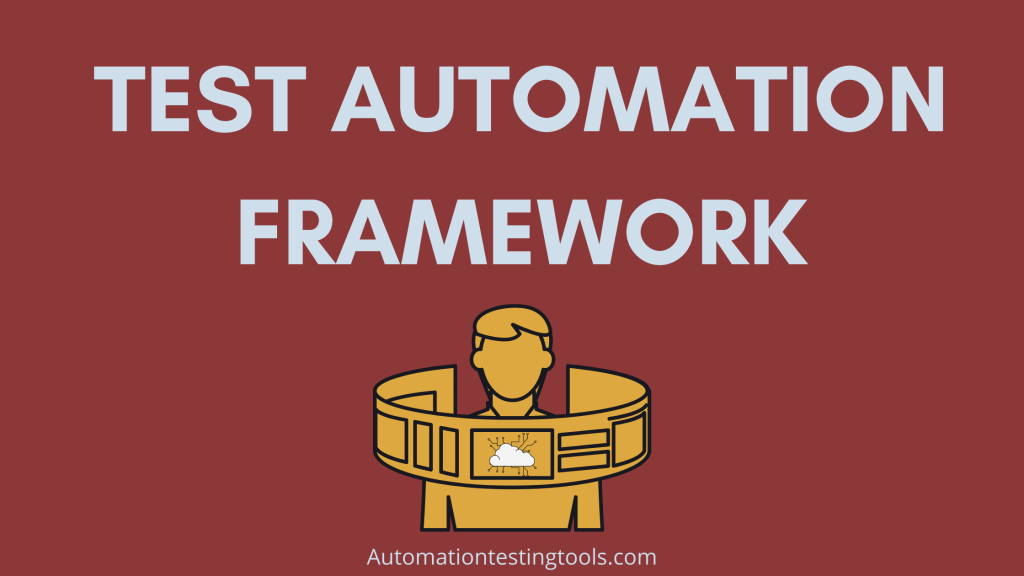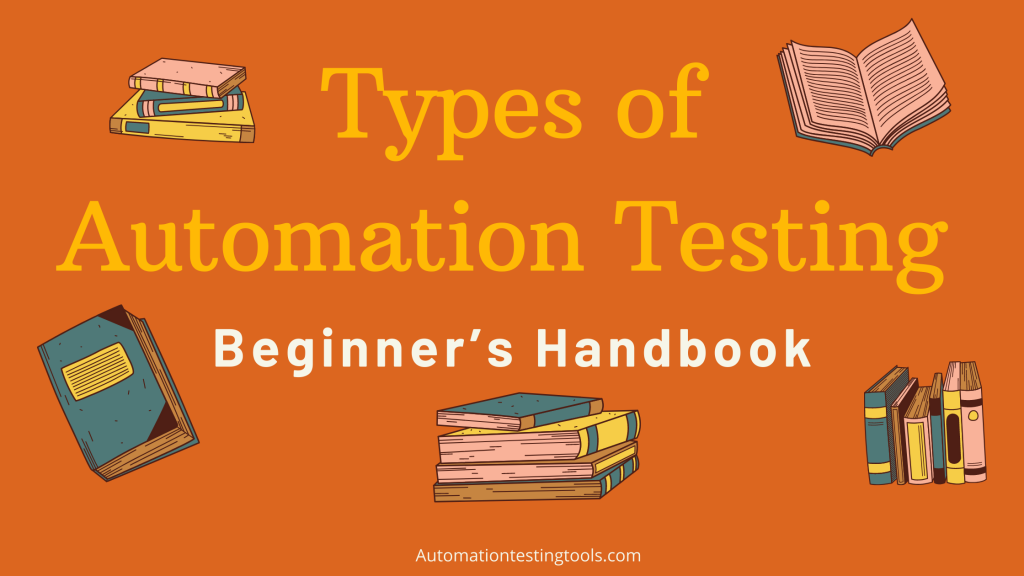Types of Automation Testing
What is Automation Testing?
In the Software Development Life Cycle (SDLC), Testing is one of the six core phases that complete that cycle. In modern SDLC models like Agile, the Testing phase presents in almost all SDLC stages, instead of focusing solely on one specific period. QA teams have actively advanced their testing process not only to ensure the product quality but also to shorten the time to market.
The testing process can be done either manually or automatically. While manual testing needs human effort to perform all test cases, automation testing helps testers release that pressure. Test automation is designed to help testers dealing with test scenarios that are time-consuming, repetitive, and boring. Let’s imagine you can now set up all actions for an overnight regression testing session and let the automation tool execute them precisely. Such a vast workload being saved!
Apart from this time efficiency advantage, Test automation also benefits testers in test quality. Manual testing is error-prone by nature as it relies on human beings. With all test cases being pre-scripted, automation testing reduces a significant amount of possible artificial defects.
To learn more about the importance and benefits of automation, you can read on this Introduction to Automation Testing
Yet, it is impossible to automate all test cases. That is why test automation is not produced to replace manual testers; it is meant to help testers get more tests done with less effort. Before heading to the automation path, testers must be capable of identifying all basic types of testing as well as their very nature. That is the foundation for success in any automation transformation.
Types of Automation Testing—What and When to Automate
Understanding the classifications of Software Testing
Types of software testing are classified into different categories depending on specific testing purposes. The two broadest categories are Functional testing and Non-functional testing.
- Functional testing
Functional testing is performed to validate the software against the functional requirements provided by clients/product owners. With a set of expected outputs set in advance, testers will execute numerous cases to test each function and then compare the final results.
For instance, on an e-commerce website, the payment process is among the most critical stages that need to function correctly. Functional testers will perform various tests at this stage to ensure a smooth check-out experience for end-users.
Functional testing’s coverage ranges from User Interface, APIs, Database, Client/Server communication to other functionality of the desired application under test. Functional testing can be done manually or automatically with the support of automation tools.
- Non-functional testing
Non-functional tests focus on testing parameters related to the software’s non-functional aspects, such as performance, usability, and security. This type of testing involves a tremendous amount of white-box testing, which requires knowledge of the source code. That is why developers most often perform non-functional testing during the cycle of software development.
A typical example of non-functional testing is when the QA team needs to check the number of people who can simultaneously access a platform all at the same time.
Non-functional testing is as necessary as functional testing because it directly affects user satisfaction while experiencing the software.
| Parameters | Functional Testing | Non-functional Testing |
| Usage | Validates the behavior of the application upon expected requirements | Validates the performance of the application under certain situations/real-world environments |
| Objective | Test the software actions | Test the performance of the software |
| Functionality | Describes what the application does | Describe how the application works |
| Testing types (Examples) |
|
|
Types of Automation Testing
Most of the tests mentioned above can be automated with automation tools and frameworks. Yet, the implementation of an automation solution is considerably costly and requires intensive maintenance. Therefore, automation testing is usually applied for a certain number of testing demands.
To best utilize the advantages of automation, the QA team must be able to analyze their testing needs, the project’s nature, and the team’s expertise level. It is crucial to keep in mind that a well-designed automation strategy can only bring victorious benefits in the long run. Learn more about how to select the right automation tool for the right team demands here.
Automation is and should be applied for test cases that involve high-risk elements and could be error-prone if done manually. Functional testing is the main objective of automation testing and with automation testers taking the responsibility.
The most popular types of automation testing are:
- Unit Testing
Unit testing is the process of testing individual components (units) of the desired application. This type of test is done in the development process as the developers need to test each unit’s functionality continuously.
- Smoke Testing
Smoke testing is performed to verify if a deployed build is ready for extensive testing or not. The build needs to pass this testing phase to ensure that it functions appropriately for all basic requirements and is stable enough for the QA team to proceed further.
- Integration Testing
Contrary to Unit testing, Integration testing is performed when all individual components are assembled and tested as a group. At this phase, testers focus on verifying the data exchange capabilities between different modules of the application.
- Regression Testing
Regression testing is a collection of test cases being executed repeatedly. The application must be tested for each change made in back-end layers to see if its previous features function correctly upon new changes. User Interface is among the most tested areas in this type of testing.
- Graphic User Interface (GUI) Testing
GUI testing is carried out to validate the visual looks of the application as per the business requirements. Expectations for the GUI are presented in the Detailed design document and the GUI mockup screens.
- API Testing
API testing focuses on the business layer of the application to ensure data transformation continuity between the two other components. API testing can be done at earlier stages of the software development life cycle and significantly reduces the time to market.
Test Automation Framework

Test automation frameworks are usually mistaken with automation testing tools. So what’s the difference?
A test automation framework is a set of rules or guidelines for automation testers to follow when conducting automation testing. It covers certain aspects of the automation process, including coding standards, test-data handling, object repository treatment, etc. In short, a test automation framework shapes the way an automation tool works accordingly.
Automation test frameworks are not mandatory. However, following a standard framework during the execution process helps automation testers to achieve beneficial outcomes. They include higher code reusability, higher portability, lower script maintenance cost, etc.
The choice of test automation framework for automation testing mainly depends on the organization’s requirements as well as the project’s nature. Some popular types of test automation frameworks in automation tools nowadays are:
- Linear Scripting (aka Record & Playback)
- Test Library Architecture Framework
- Data-Driven Testing Framework
- Keyword-Driven or Table-Driven Testing Framework
- The Hybrid Test Automation Framework
Top Automation Testing Tools
After knowing all different types of test automation, getting familiar with some available tools in the market might help the tool selection process later on.
- Selenium
Selenium is considered as the most popular automation platform and the standard for all other automation tools. It is an open-source platform used to validate web applications across multiple platforms and browsers.
Website: selenium.dev
- Katalon Studio
Katalon Studio is a complete automation testing platform for all testing needs, from the web, mobile, desktop applications to API testing. Users can experience Katalon Studio with its free version or opt to upgrade to the enterprise version with extended features.
Website: katalon.com
- UFT One
UFT One (formerly UFT) is a popular paid tool used to execute desktop, mobile, and RPA applications testing. The tool provides advanced capabilities for smarter object detection and correction.
Website: microfocus.com/en-us/products/uft-one/overview
- Test Complete
Test Complete is a commercial platform for automating web, mobile, and desktop applications testing. Robust integration and cross-platform testing capabilities are what make Test Complete a tool of choice for many automation testers.
Website: smartbear.com/product/testcomplete/overview
- SoapUI
SoapUI is explicitly designed for API testing – rising demand in the software testing field. SoapUI supports both REST and SOAP services, making it one of the most trusted automation API validation tools.
Website: soapui.org
Please refer to the Best Automation Testing Tools for 2020 (Top 10 reviews) article for a detailed review of these tools.
Conclusion
This brief overview of software testing classifications and different test automation types is the essence of automation testing. Before heading to the automation venture, a thorough reparation in both knowledge and resources will help any QA teams achieve the desired goals.















